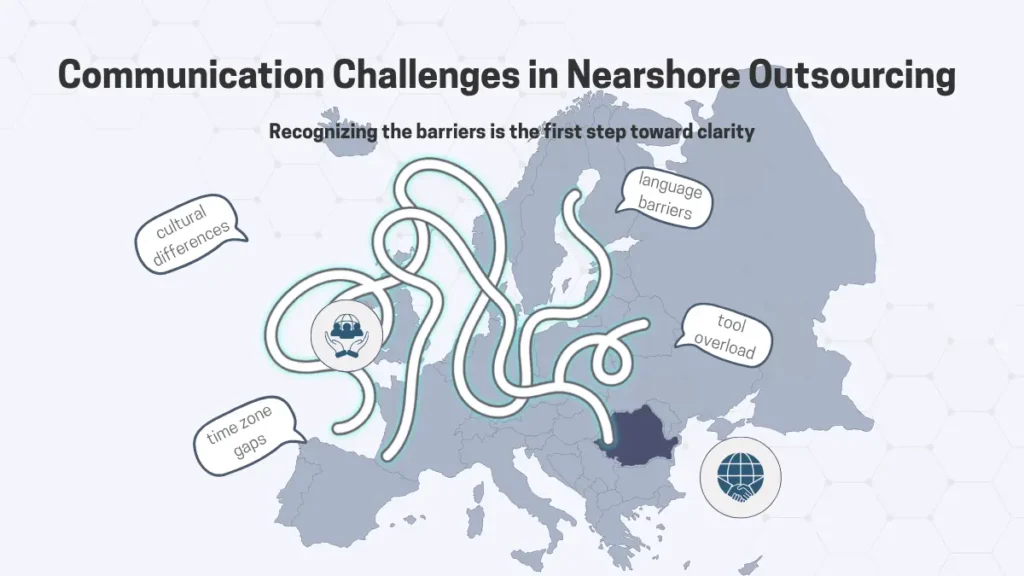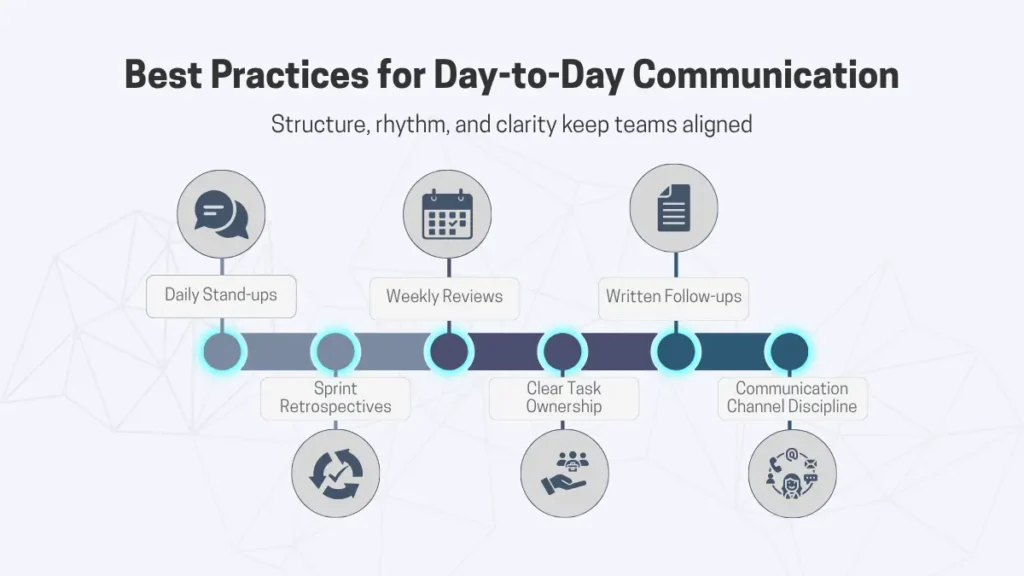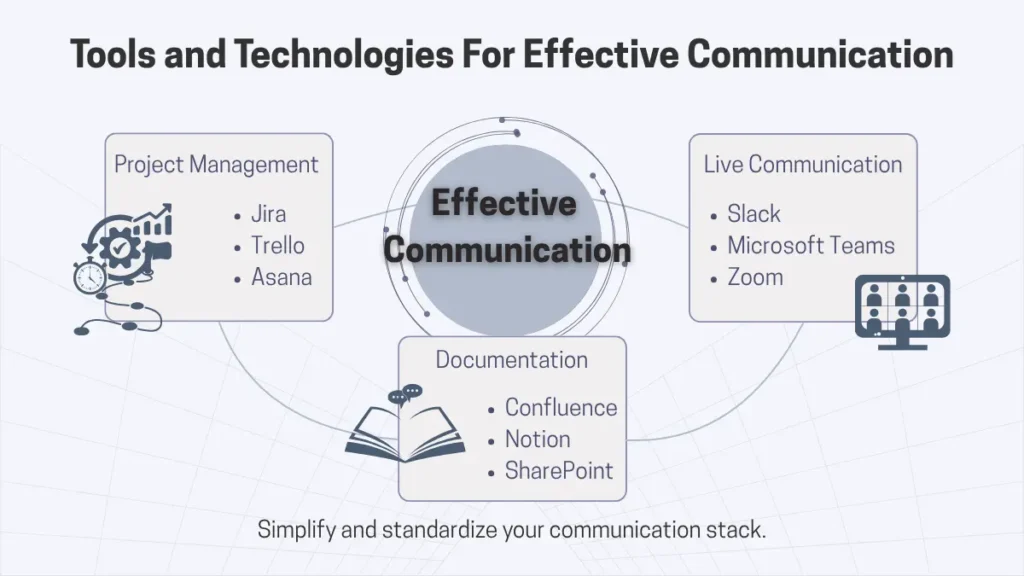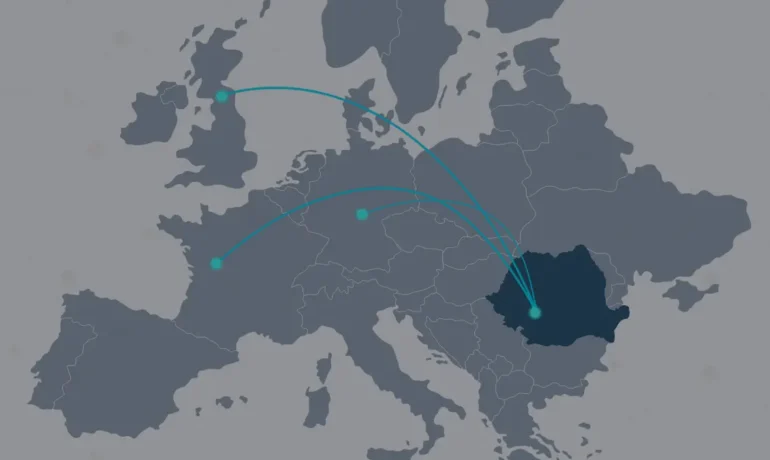Reading time: 8 minutes
It’s not just about saving money; it’s about getting a team that acts like an extension of your own. That is what Western European companies want when they opt for nearshore outsourcing. Nearshore outsourcing offers the benefits of outsourcing with the lowest amount of time zone and cultural difference issues involved in going offshore.
When Western European firms select Romania as their nearshore IT outsourcing partner, they expect not only skilled developers but also dependability and responsiveness. These traits guarantee that projects stay on track and that not a single detail slips through the cracks due to language, time zone, or cultural disparities.
But even when the right location and hugely skilled builders are in place, problems can arise if communication breaks down. Forgotten details, unclear definition of responsibilities, and conflicting working styles can quickly turn a promising partnership into frustration.
In this article, we will look at why communication is the essence of nearshore outsourcing, what are the common issues one should be aware of, and the best practices that can guarantee successful cross-border collaboration.
The Communication Advantage of Nearshore Outsourcing
Nearshore outsourcing is different from offshore models in one significant way: proximity equals better communication.
The benefits of cooperation with a Romanian partner are as follows:
- Extremely minor time difference (usually 1 to 2 hours) from the majority of EU countries, which allows for real-time communication.
- Cultural and business similarity, since Romania shares a similar European work ethic and values.
- Multilingual cooperation, since most IT professionals are English-speaking and frequently also German- or French-speaking.
At Ambo Software, these benefits translate into quicker feedback, better understanding, and more flexible project management.
Typical Communication Challenges in Nearshore Outsourcing
Even in nearshore collaboration, with time zone and geographical distances being thin, communication challenges can affect productivity and perception. Cultural differences, more specifically the style of communication, is an usual challenge. Western European teams tend to be more direct and explicit in their communication, whereas nearshore partners can be more diplomatic or indirect.

Language also becomes a factor, even when both are using English. Differences in accent, idioms, and technical vocabulary can stumble over each other or slow down progress. Having pre-agreed upon terminology at the beginning reduces such resistance.
Although time differences are minimal in nearshore outsourcing, one or two hours can sometimes be troublesome for meetings or project handovers when close deadline working teams are involved. This can be mitigated by using clear scheduling practices and overlapping working schedules.
Finally, there is tool overload, the second quiet barrier. Teams use multiple communication channels such as emails, chat, video calls, and project boards without establishing which channel is for what. This creates duplicate messages, lost updates, or not knowing what the latest information is. Having a single communication policy, combined with the right tools and habits, makes working in teams and focusing simpler.
By recognizing these issues upfront, companies can build more open, more robust relationships with their nearshore partners.
Key Principles of Effective Communication
Good nearshore outsourcing partnerships are based on regular and transparent communication. Four essential principles help ensure smooth working together as well as developing mutual trust between client and partner teams.
Transparency
The first principle is transparency and clarity. Free-flowing communication must not be needlessly filtered. Teams have to exchange both problems and successes early on in plain and straightforward language. Openness disallows misunderstandings and allows timely resolution of problems, encouraging responsibility on both sides.
Consistency
Consistency is also important. Preplanned update schedules, anticipated reporting frequencies, and habits of regular communications create stability and reliability. Whether through a weekly project status meeting or shared project dashboard, consistency keeps everyone on the same page and leads teams to anticipate future action instead of reacting to surprises.
Cultural awareness
Third is respect and cultural sensitivity for one another. Respect and appreciation for cultural differences, for instance, tone of communication, feedback styles, and decision-making habits, enhance trust and teamwork. Having an open mind to discuss such differences avoids unintentionally igniting conflict and encourages empathy.
Documentation of agreements
Finally, successful communication relies on recording and confirming agreements. Verbal conversation needs to be followed by written summaries or confirmations, such as meeting minutes, lists of tasks, or change histories. Doing so ensures that everyone’s on the same page regarding what’s been agreed to, reducing the potential for misunderstanding or lost promises.
When applied in groups, these values establish a culture of transparency, predictability, and respect in communication. Through it all, there is a collaboration in which each side feels informed, respected, and empowered to work together for shared objectives.
Best Practices for Day-to-Day Communication
Daily communication is needed for successful nearshore outsourcing cooperation. With successful daily communication, distributed teams are in sync, reduce misunderstandings, and make consistent progress toward shared objectives.

One of the best practices is to maintain a consistent communication cadence, such as daily stand-ups, weekly reviews, and sprint retrospectives. Daily stand-ups facilitate quick alignment on priorities, issues, and accomplishments. Weekly reviews provide an elevated perspective on the status of the project and the deliverables. Sprint retrospectives allow teams to observe what went well and what needs to be fixed, allowing for continuous improvement.
Another key is to establish clear ownership and responsibility. Every task, feature, or deliverable should have someone who owns it. This holds everyone responsible and prevents duplicative work. Clear responsibility mapping provides the client and partner teams with clear knowledge of who to ask for progress or explanations.
Defining the channels is also important. Teams also employ a variety of tools, such as Slack or Microsoft Teams for chat, Jira or Trello for work, and email for official communications or client interactions. Defining each intended purpose of platform usage eliminates ambiguity and ensures message consistency and traceability.
Finally, post-meeting written reminders are essential. Placing the important decisions, next steps, and deadlines on paper ensures everyone comes with the same understanding and nothing is overlooked. These written reminders are also a point of reference in the future.
By meshing disciplined daily routines, established roles, disciplined use of tools, and documentation, nearshore teams can enjoy great day-to-day communication. This results in enhanced efficiency, minimized errors, and more collaboration across borders.
Building Trust Through Communication
Communication is the primary vehicle to build and maintain trust, which is the foundation of any effective nearshore outsourcing relationship. Regular, honest reports are the most important element to create a sense of reliability and predictability. Reporting on the state of affairs on a regular basis, troubles, and upcoming plans allows teams to make the clients feel confident that the undertaking is underway. Easy-to-provide day-to-day or weekly updates suffice to increase the sense of transparency and involvement.
Early, the first time working together, it is generally better to talk more than to hope that everyone will pick it up. New coalitions take more process, expectation, and communication style alignment. Providing more context, checking decisions, and handing out information in advance set a good work rhythm. Later, as trust builds, communication can just get clearer and stay unambiguous.
Two-way feedback loops between the client and the nearshore team are also essential. Feedback where both sides can speak up, pose objections, or contribute suggestions creates a partnership sense instead of hierarchy. Respectfully given and receptively received constructive criticism enables continuous improvement and keeps minute misunderstandings from becoming giant problems.
Ultimately, trust is created not through words but through reliable, truthful, and organized communication. When lines of communication are open and both parties communicate freely and provide open lines of feedback, cooperation becomes a genuine long-term partnership based on respect and trust.
Tools and Technologies That Enable Effective Communication
Modern nearshore outsourcing partnerships are supported by digital platforms that connect individuals and enable interactions. Choosing the right tools without over-engineering things is imperative in order to preserve lucidity and agility.

Project management tools like Jira, Trello, or Asana organize tasks, track progress, and prioritize. It renders the project status clear to everyone involved and provides a single location to assign tasks, monitor deadlines, and record changes.
For day-to-day communication, live communication tools such as Slack, Microsoft Teams, or Zoom enable real-time discussions, quick feedback loops, and virtual meetings. They alleviate email overload. Integrating messaging tools with project management systems also enhances visibility and response times.
Equally important are documentation tools like Confluence, Notion, or SharePoint. They act as the team’s knowledge base by keeping decisions, processes, and technical documentation in a structured, searchable format. This exposes key information even when team members come and go.
The error that most people make is using too many tools at the same time. The best that one can do is simplify and standardize by selecting a limited number of well-integrated tools and creating clear-cut rules of utilization. Every member of the team must be clear about what platform to use for what. By being selectively chosen and used regularly, tools maximize collaboration, reduce confusion, and optimize communication for dispersed teams.
What Makes Communication Easy in Nearshore Outsourcing to Romania
Romania has become one of the most sought-after nearshore outsourcing locations in Europe because of its technical proficiency and excellent communication skills. Romanian IT teams are not monolingual; most professionals speak English, while many also communicate in German and French fluently. This makes it convenient for them to interact with Western European clients.
The other tremendous advantage is cultural alignment. Romania shares many of the business values and communication styles of Western European countries, such as directness, punctuality, and teamwork orientation. This cultural similarity reduces misunderstandings and enables teams to integrate seamlessly into the work cultures and management practices of clients.
Geographic closeness also facilitates communication. Due to short flights and identical or comparable time zones, project kick-offs, workshops, and face-to-face meetings are simple to plan. Face-to-face interaction, which is still among the best ways of establishing trust, can be planned without the significant logistical challenges or expense.
Finally, Romania’s strong education system consistently produces highly skilled IT specialists who combine strong technical expertise with great soft skills. The universities in the region focus on teamwork, analytical thinking, and problem-solving. These aspects enable concise, clear, and assertive communication.
These factors collectively make Romania an ideal choice for nearshore outsourcing partnerships. Clients enjoy a mix of language skills, cultural similarity, and professionalism that ensures open, successful, and long-lasting collaboration.
Future Trends in Communication for Outsourcing
The way outsourcing teams communicate is quickly changing, and all this is due to technology. One of the major changes is the innovation of AI-based communication tools. Real-time translation, auto-generated meeting minutes, and smart chatbots are breaking language barriers and saving time. The tools allow remote teams to communicate effectively with each other and keep their documents updated and correct.

Another key trend is the increase in hybrid collaboration approaches. Hybrid approaches integrate on-site workshops for large strategy planning and remote work for recurring tasks. It allows teams to build relationships in person while being agile and productive using digital tools. Nearshore outsourcing, due to its proximity, easily allows for this hybrid approach, and hence travel and face-to-face communication become convenient.
Finally, soft skills are ever more important in technology teams. Along with coding or engineering skills, human communication, flexibility, and empathy are essential to fruitful collaboration. As more pedestrian tasks are automated, high-quality human communication—listening, negotiating, and reading context—will make the most fruitful outsourcing partnerships.
All these trends allude to a more intelligent, more agile, and people-focused outsourced communication future. Technology will not only intensify relationships but also cause collaboration to feel more organic in other regions in this future.
*****
Good communication is required for any successful nearshore outsourcing partnership. Clear structures, periodic updates, and common ground turn teamwork into a long-term trust-based relationship. With open and consistent communication among teams, projects become more developed, risks are minimized, and all stakeholders perceive better outcomes.
If you’re in search of a nearshore software development company that values simplicity and collaboration, we’d love to discuss it with you. Contact Ambo Software today and see how our communication approach can make your next outsourced initiative more agile, faster, and more profitable.

